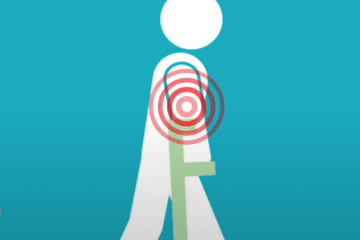Pain Assessment Toolbox for Kids with Disabilities
Hi everyone. My name's Ashleigh Townley and I'm a knowledge broker at Holland Bloorview. A knowledge broker is someone that takes research evidence and helps clinicians and families use that research in their everyday lives. And today I'm going to talk to you about pain assessment.
Clinicians have always known that pain is a problem for kids with cerebral palsy. We use pain assessment to know if they have pain so we can better manage it for them. But in a busy clinic situation, it's important that it happens systematically. To help with pain assessment we have something called the chronic pain assessment toolbox for kids with disabilities. The toolbox is really awesome because it captures three different ways to assess pain for kids with cerebral palsy. We can assess pain for kids that can speak for themselves. We can assess pain by working with caregivers to ask them about their child's pain. And then we can ask in two different ways, we can ask the child and we can ask their parent and they can compare and we can see if they're on the same page with where their pain is.
In the toolbox we have surveys that clinicians can do with patients and families. One type of tool is to tell if pain is present, how long that pain may be going on, and if that pain may be affecting any activities of daily living for a child. The second type of tool is for pain coping. So if a child does already have pain, how well are they dealing with it and if their interventions are helping them to reduce the pain. Ultimately the scores are not what's important, what's important is the interaction between the clinician and the client and family.
A lot of people with cerebral palsy will experience pain over the course of their life. Through better assessment we can provide better interventions, which will lead to a better quality of life. To learn more about the toolbox and find out about how pain assessment might be helpful to you click on the link below to download your free copy.
"Through better assessment we can provide better interventions, which will lead to a better quality of life."




